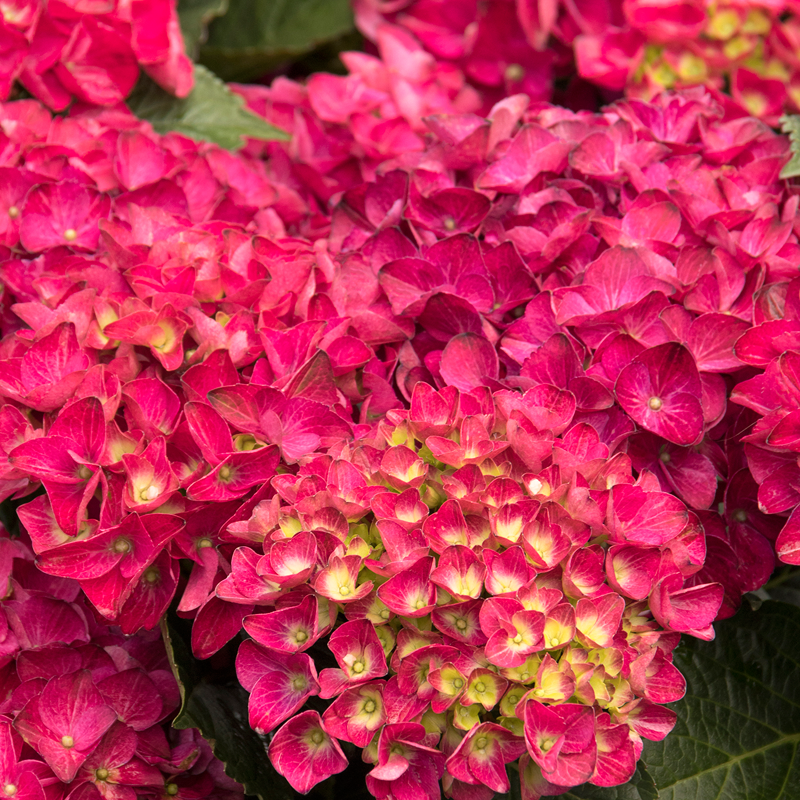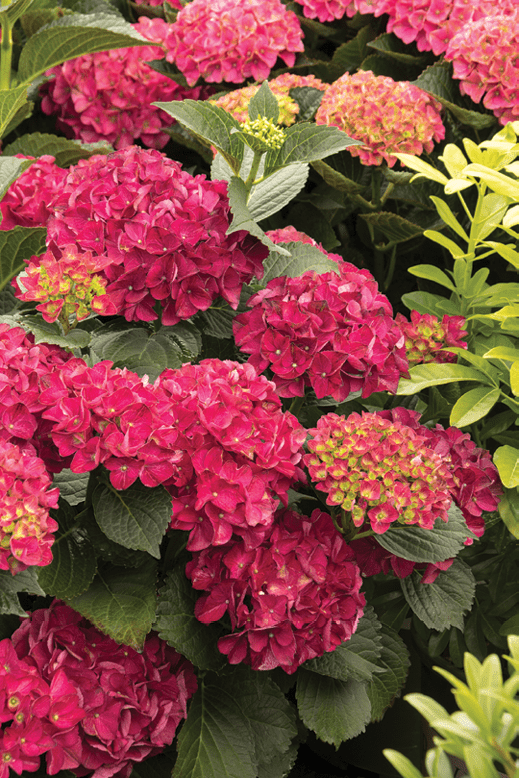Cape Hatteras Hydrangea: The Ultimate Guide To Growing This Beautiful Flower
Cape Hatteras Hydrangea: The Ultimate Guide to Growing This Beautiful Flower
Hydrangeas are some of the most popular flowering shrubs in the world, and for good reason. They come in a wide variety of colors, sizes, and shapes, and they can add a touch of elegance to any garden. One of the most beautiful and unique hydrangea varieties is the Cape Hatteras hydrangea.
Cape Hatteras hydrangeas (Hydrangea macrophylla 'HORTHAT') are known for their stunning ruby red blooms. The color of the blooms is not influenced by soil pH, so you can enjoy their vibrant color year after year. Cape Hatteras hydrangeas are also rebloomers, which means they will produce flowers on new wood in the summer and fall.
In addition to their beautiful blooms, Cape Hatteras hydrangeas are also relatively easy to grow. They are hardy in zones 4-9, and they can tolerate a wide range of soil conditions. Cape Hatteras hydrangeas prefer full sun to partial shade, and they need regular watering, especially during the first year after planting.
If you are looking for a beautiful and easy-to-grow hydrangea variety, the Cape Hatteras hydrangea is a great option. Here is a more detailed guide on how to grow and care for this stunning shrub.
Choosing a Location
The first step to growing a Cape Hatteras hydrangea is to choose the right location. Cape Hatteras hydrangeas prefer full sun to partial shade. They can tolerate some direct sun, but too much sun can scorch their leaves. If you live in a hot climate, it is best to plant your Cape Hatteras hydrangea in a location that receives afternoon shade.
Cape Hatteras hydrangeas also need well-drained soil. They are not tolerant of wet or soggy soil, which can lead to root rot. If you have poor drainage in your garden, you can improve it by adding sand or gravel to the soil.
Planting
The best time to plant a Cape Hatteras hydrangea is in the spring or fall. When planting, dig a hole that is twice as wide and as deep as the root ball of the shrub. Backfill the hole with soil, and water the shrub thoroughly.
Fertilizing
Cape Hatteras hydrangeas do not need a lot of fertilizer. You can fertilize them once a year in the spring with a balanced fertilizer. If you live in a hot climate, you may need to fertilize them twice a year.
Watering
Cape Hatteras hydrangeas need regular watering, especially during the first year after planting. Water them deeply once a week, and more often during hot, dry weather.
Pruning
Cape Hatteras hydrangeas do not need to be pruned heavily. You can prune them in the spring to remove any dead or damaged branches. You can also prune them to shape the shrub.
Overwintering
Cape Hatteras hydrangeas are hardy in zones 4-9. In colder climates, you may need to protect them from the cold by covering them with a burlap sack or evergreen boughs.
Troubleshooting
If your Cape Hatteras hydrangea is not blooming, it may be due to a lack of sunlight, water, or fertilizer. It may also be due to a problem with the soil pH. If you are not sure what is wrong, consult with a gardening expert.
Conclusion
Cape Hatteras hydrangeas are beautiful and easy-to-grow shrubs that can add a touch of elegance to any garden. With proper care, they will provide you with years of enjoyment.
If you're looking for a beautiful and hardy hydrangea that will add a touch of elegance to your garden, the Cape Hatteras hydrangea is a great choice. This compact variety produces stunning ruby red mophead blooms that are not influenced by soil pH, so you can enjoy their vibrant color year after year. Cape Hatteras hydrangeas are also relatively easy to care for, making them a good choice for even novice gardeners.
To learn more about Cape Hatteras hydrangeas, I recommend visiting the website . This website has a wealth of information on all aspects of these plants, from their history and cultivation to their care and pests. You'll also find a helpful plant care guide and a gallery of stunning photos.
So what are you waiting for? Visit today to learn more about the Cape Hatteras hydrangea!
FAQ of cape hatteras hydrangea
- Question 1: What is Cape Hatteras hydrangea?
Cape Hatteras hydrangea is a deciduous shrub that is native to the coastal areas of North Carolina and Virginia. It is known for its large, showy flowers that bloom in shades of blue, pink, or white. Cape Hatteras hydrangeas are relatively easy to care for and can grow in a variety of conditions.
- Question 2: How to care for Cape Hatteras hydrangea?
Cape Hatteras hydrangeas need full sun to partial shade and well-drained soil. They are relatively drought tolerant, but they will appreciate regular watering during the summer months. Cape Hatteras hydrangeas can be fertilized in the spring with a balanced fertilizer. In the fall, they should be pruned to remove dead or damaged branches.
- Question 3: How to propagate Cape Hatteras hydrangea?
Cape Hatteras hydrangeas can be propagated by taking cuttings in the spring or summer. To take a cutting, select a healthy stem that is about 6 inches long. Remove the leaves from the bottom 2 inches of the cutting. Dip the cutting in rooting hormone and plant it in a pot of well-drained potting mix. Keep the potting mix moist and place the pot in a bright, indirect location. The cutting should root in about 4-6 weeks.
- Question 4: How to prepare Cape Hatteras hydrangea for winter?
In the fall, before the first frost, Cape Hatteras hydrangeas should be watered deeply. Mulch around the base of the plant with a 2-3 inch layer of wood chips or bark. This will help to insulate the roots and prevent them from freezing. If you live in an area with cold winters, you may also want to cover the plant with a burlap sack or other protective covering.
- Question 5: What are some common problems with Cape Hatteras hydrangea?
Some common problems with Cape Hatteras hydrangea include:
* Leaf spot: This is a fungal disease that causes brown or black spots on the leaves. It can be treated with a fungicide.
* Leaf scorch: This is a condition that occurs when the leaves are exposed to too much sunlight or heat. It can be prevented by planting the hydrangea in a location that receives partial shade.
* Wilt: This can be caused by a variety of factors, including drought, root rot, or pests. It is important to identify the cause of the wilt so that it can be treated properly.
Image of cape hatteras hydrangea
5 different images of "Cape Hatteras hydrangea" from Pinterest:
- Image 1: A large, white Cape Hatteras hydrangea in full bloom. The flowers are clustered together in large, rounded heads. The leaves are dark green and glossy.

- Image 2: A close-up of the flowers of a Cape Hatteras hydrangea. The individual flowers are small and star-shaped. They are a delicate shade of pink.

- Image 3: A Cape Hatteras hydrangea in a garden setting. The hydrangea is surrounded by other flowers, including roses, lilies, and daisies. The hydrangea is the tallest flower in the garden.

- Image 4: A Cape Hatteras hydrangea in a vase. The hydrangea is surrounded by greenery. The flowers are a vibrant shade of blue.

- Image 5: A Cape Hatteras hydrangea in a fall setting. The hydrangea leaves are turning a bright shade of red. The flowers are still in bloom, but they are starting to fade.

Post a Comment for "Cape Hatteras Hydrangea: The Ultimate Guide To Growing This Beautiful Flower"